War Eagles Fly Air Museum combines vintage autos and military aircraft
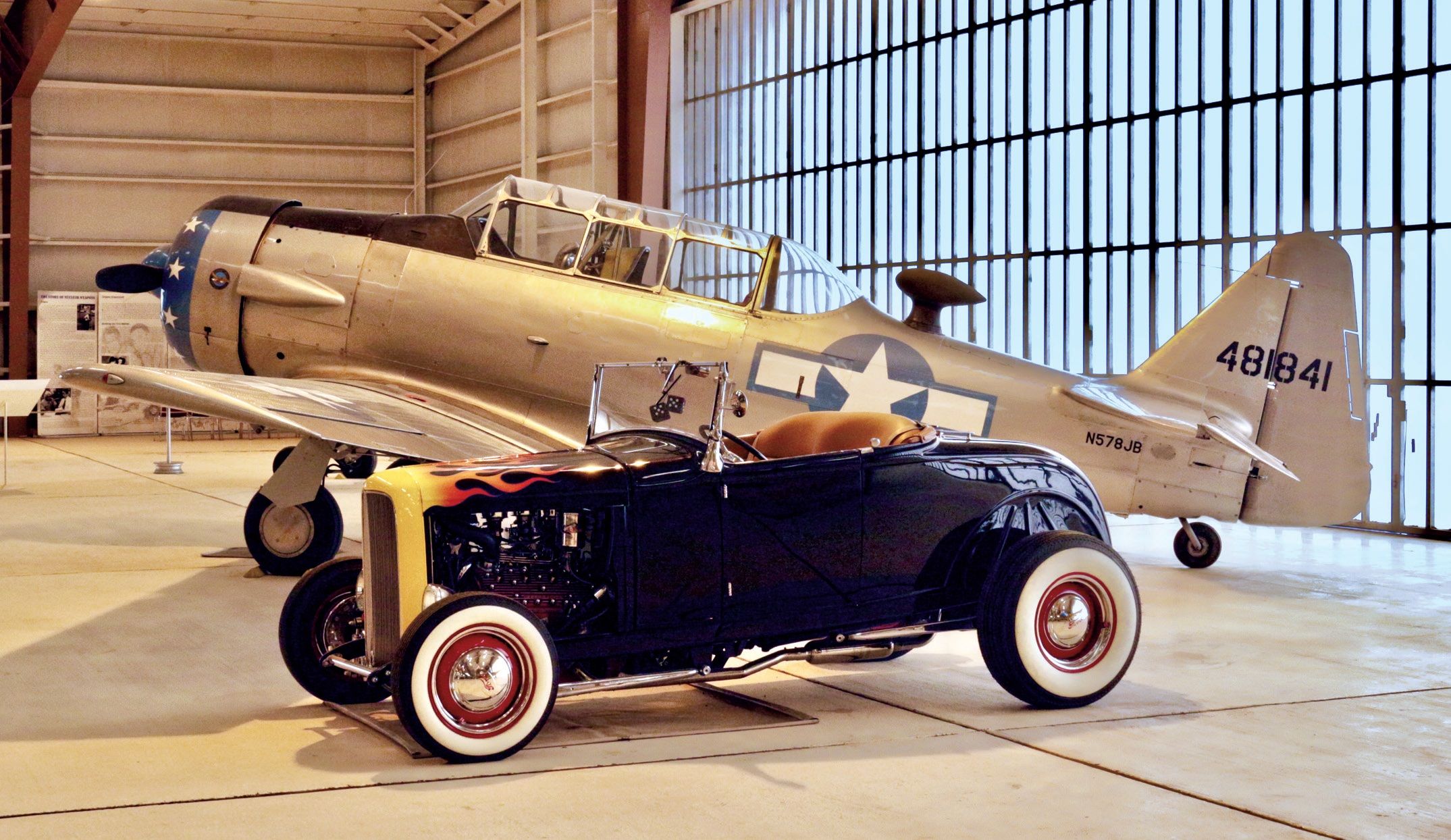
A 1931 Ford Model A roadster hot rod with a North American AT-6 Texan. The Texan was used to train military pilots all over the world.
War birds soar in New Mexico
The War Eagles Air Museum, on the outskirts of El Paso, Texas, contains a varied assemblage of airplanes, along with classic automobiles tucked under their wings. Most of the three dozen aircraft are veterans of the armed forces—serving in World War II, Korea, and Vietnam for the United States, Great Britain, Germany, and the Soviet Union—while the 50-plus domestic and imported cars represent a mix of civilian and military uses.
The collection is housed in a hangar at Dona Aña County Airport, in the desert town of Santa Teresa, New Mexico, just six miles north of the U.S.-Mexico border. The mid-century ambience of crooners Nat “King” Cole and Bing Crosby piped in over the speakers is punctuated by the occasional rumble of a propeller as airplanes taxi nearby for takeoff.
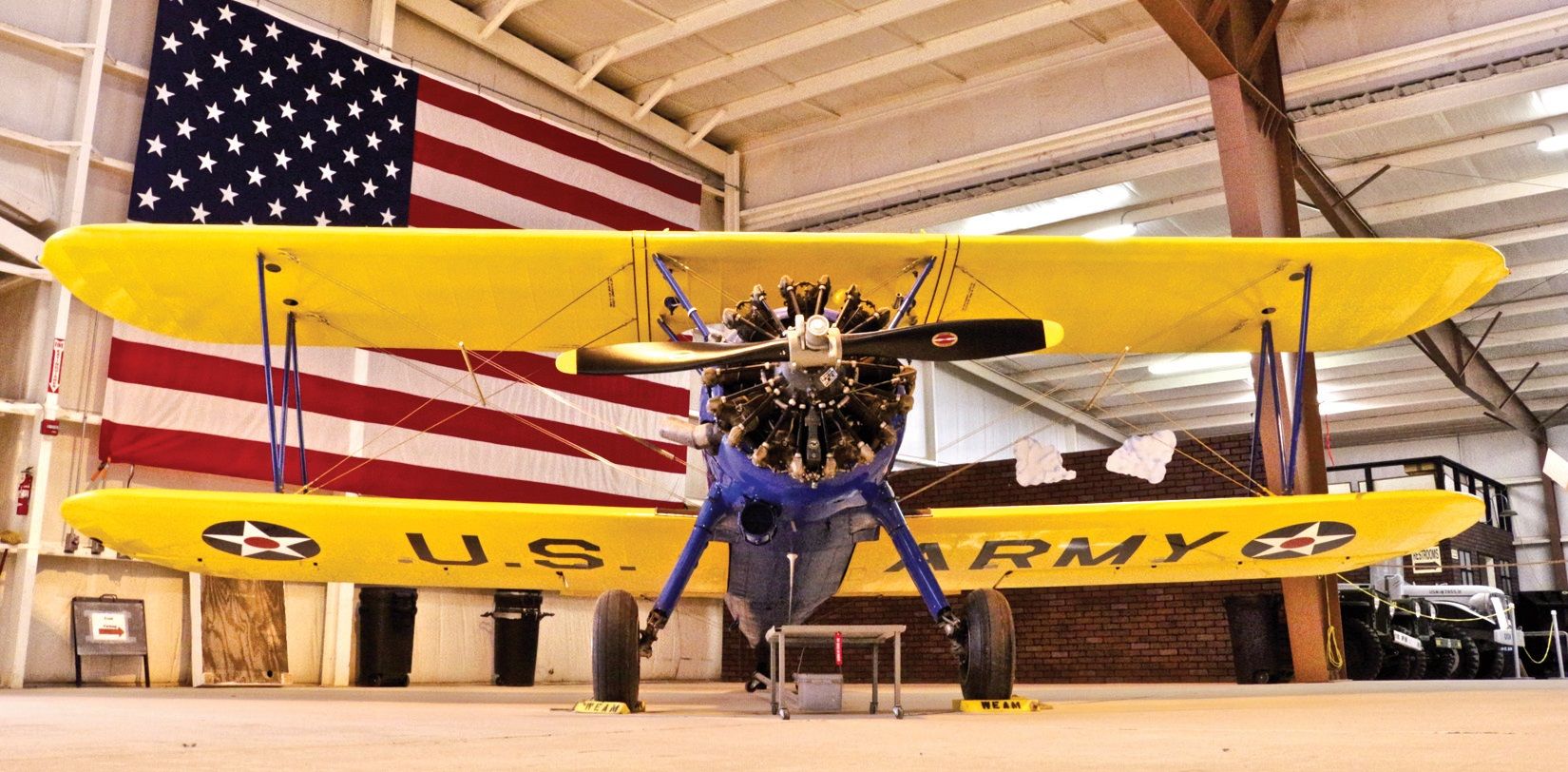
A Boeing-Stearman PT-17 Kaydet pilot trainer in the War Eagles Air Museum collection.
The museum was founded in 1989 as a center for aviation history by West Texas rancher and oilman John T. MacGuire and his wife Betty, both of whom were pilots. With the donation of foreign-made automobiles and motorcycles by local Glenn Hoidale, the museum became an automotive destination as well.
The North American TF-51D Mustang of World War II acclaim is a rarity, as it is a two-seat version of the fabled fighter. Dubbed the “Friendly Ghost,” it’s the result of a 1956 project by the Texas Engineering & Manufacturing Corporation (TEMCO) to convert 15 World War II-era Mustang fighter planes into dual-control trainers. This particular plane was spotted in parts in a salvage yard in Jakarta, Indonesia, in the 1970s. After years of restoration work, it was brought to the museum and flown by the MacGuires.
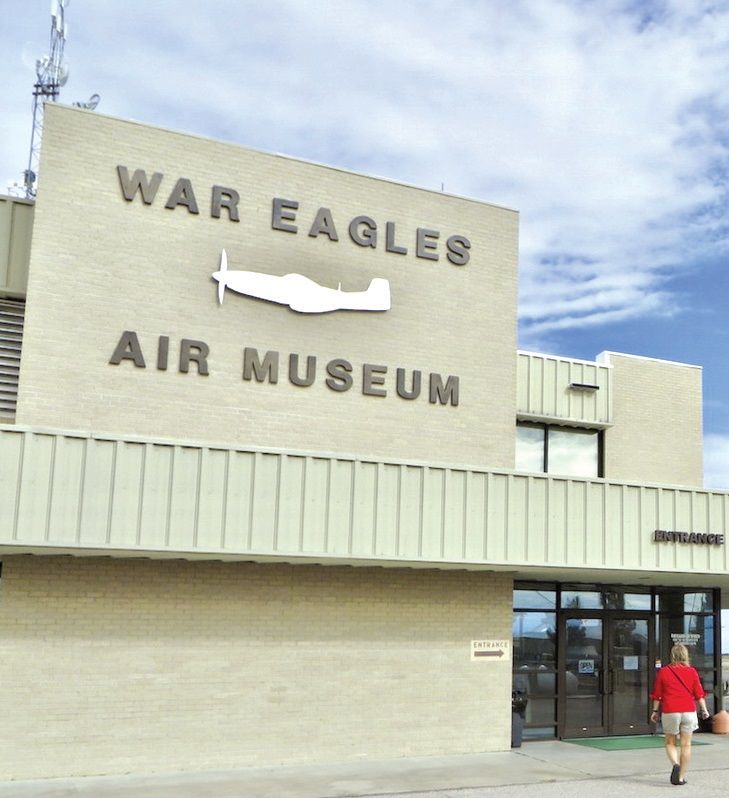
The exterior of the museum, located in Santa Teresa, New Mexico.
One of the appealing aspects of the museum is seeing cars and airplanes side by side, which allows for some clever combinations. Accordingly, parked next to the flying Mustang is a similarly sleek 1966 Ford Mustang convertible, in an appropriate sky-blue color, creating a unique tableau.
The museum’s C-47A was flown in World War II, arriving in England in May 1944 as part of the IX Troop Carrier Command of the 9th Air Force. It flew paratroopers on D-Day, then was converted to a DC-3C for civilian use when its wartime service ended. Parked beneath it is a 1942 Cadillac coupe—it represents one of the last examples of American automobile manufacturing before the United States entered the war and rapidly converted its civilian industrial capacity to military production.
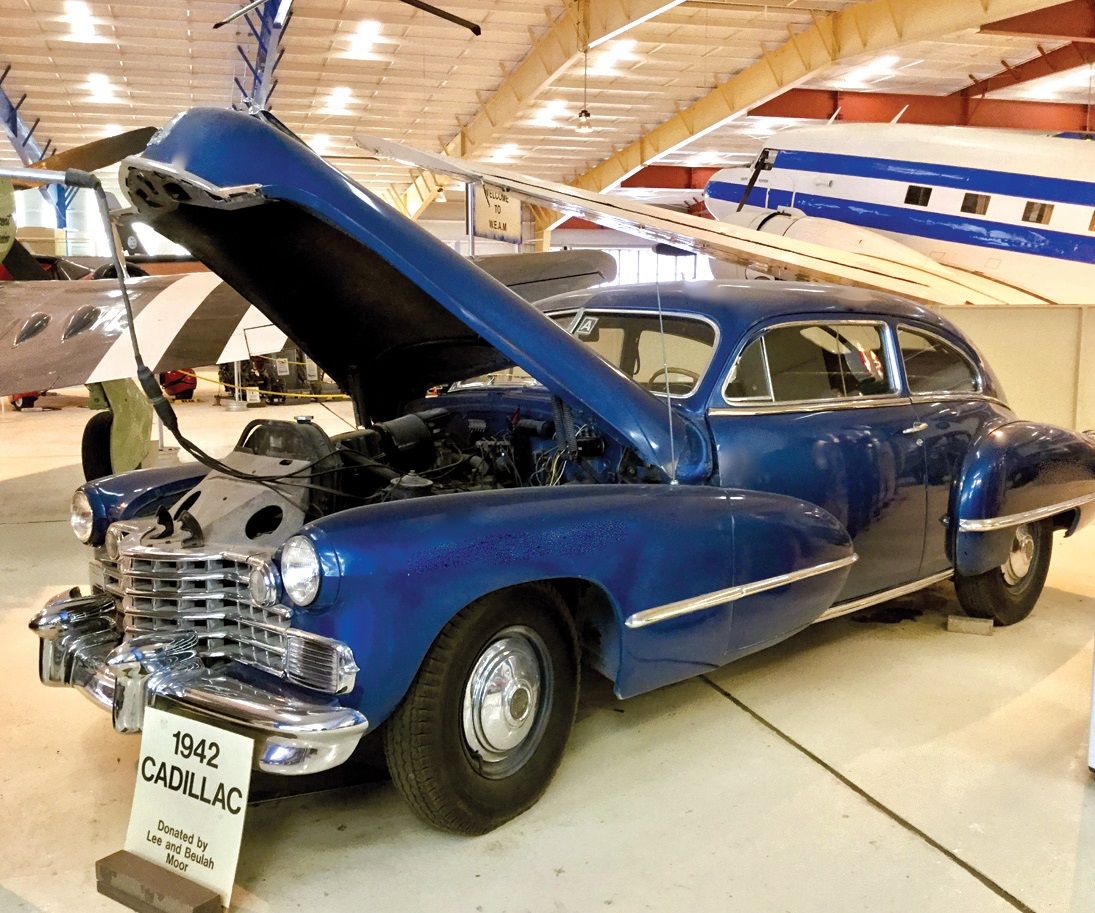
A 1942 Cadillac sits between a Hawker Fury (on the left) and the museum’s C-47A that served in the D-Day invasion and was converted to a DC-3C for civilian use.
Built late in the first year of operations, the distinctive yellow 1937 Piper J-3 Cub is just the 42nd of this iconic airplane produced, and likely the world’s oldest operational Piper aircraft. It sits next to a 1914 Ford Model T speedster. Per museum Executive Director Bob Dockendorf, “Ford didn’t actually make a speedster. It’s an example of neighborhood hot rods built by teenagers taking parts from a Model A, parts from a Model T, and parts from anything else they might find laying around.”
With painted flames roaring up its hood, a 1931 Ford Model A roadster, another example of hot rod culture, is outfitted with a 1949 239-cu.in. flathead engine, and paired with a 1945 North American AT-6F Texan. The Texan was produced by the thousands to provide training to American pilots during World War II.
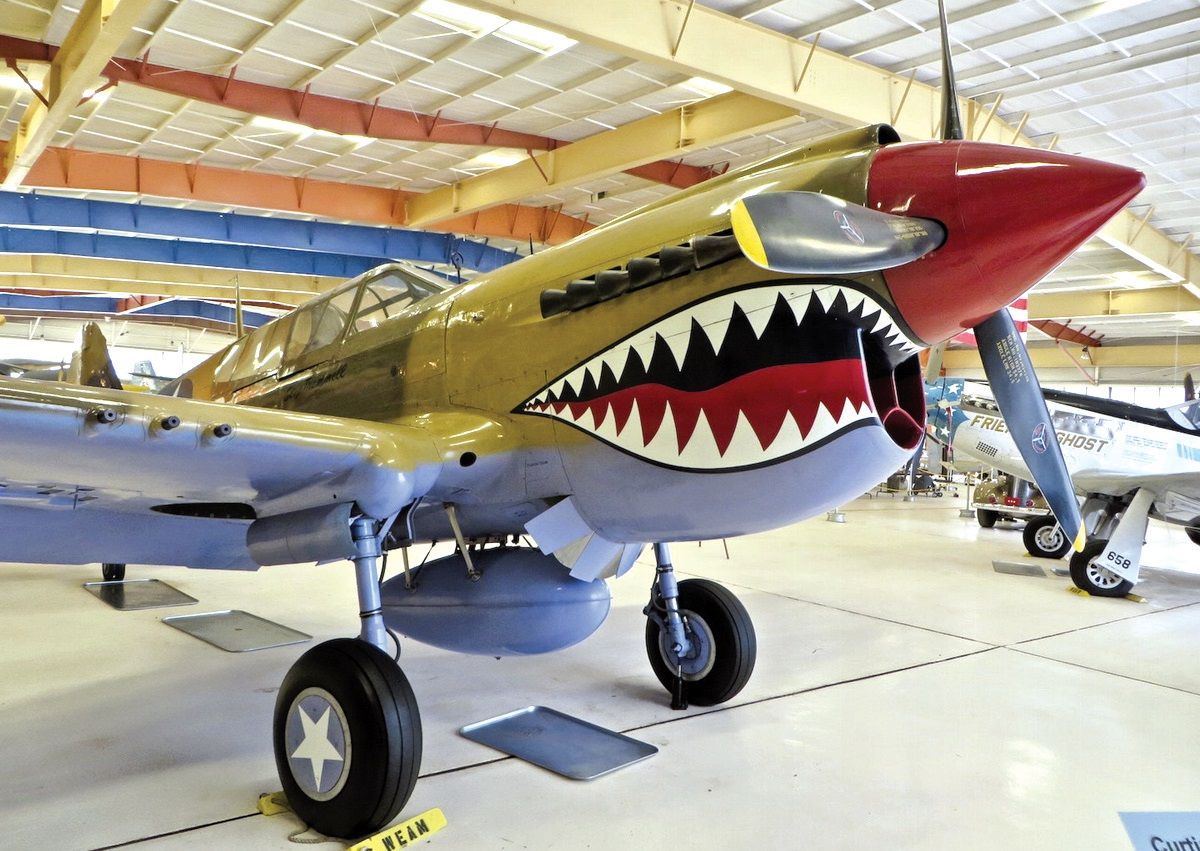
This Curtiss P-40 Warhawk served with the 23rd Fighter Group in China during WWII. Power for aerial combat comes from a 1,200-plus-horsepower V-12 Allison.
Cold War-era jet aircraft include a Soviet-built MiG-15 trainer (designated by NATO as the Midget), a MiG-21 fighter that served in the East German Air Force, and a North American FJ-2 Fury.
There are also two rows of vehicles ranging from a pair of Ford pickup trucks, from 1950 and 1955, to international cars like a 1965 Volvo 122S, pumpkin-colored 1972 Honda 600, and a 1973 Honda Civic. The latter are examples of daily-drivers not often found in museums. The Honda 600 represented the company’s first foray into the American automotive market. A 1958 Morris Minor 1000 rounds out the tableau of “regular” cars.
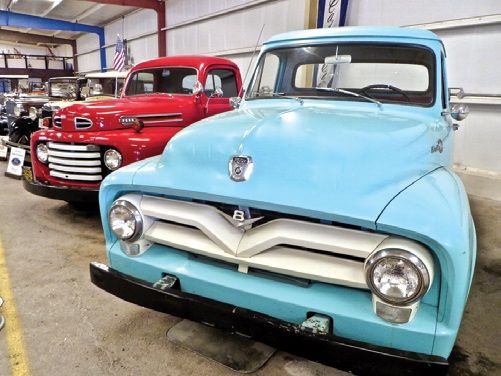
A 1950 Ford F-1 is parked alongside a 1955 F-100.
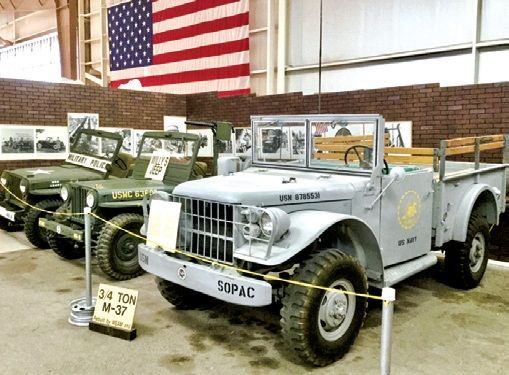
A U.S. Army Jeep, U.S. Marine Jeep, and a Navy M37 ¾-ton truck anchor the museum’s military vehicles collection.
Military vehicles complete the automotive section, including a U.S. Navy M37 ¾-ton truck, 1952 Willys Jeep M-38 in Marine Corps markings, and a U.S. Army 1952 Willys Jeep M-38 liveried as a Military Police vehicle. The automobilia collection also includes a wide array of vintage gasoline pumps.
This was our second visit to the museum. On our first trip, four years earlier, we met a local man named Maynard Beamesderfer, who was a war eagle himself. Known as “Beamy,” he was a D-Day veteran who, as a 19-year-old, parachuted into Normandy the night before the invasion as part of the Pathfinders of the 101st Airborne Screaming Eagles, flying over in a C-47 just like the one on display. Beamy passed away before this visit, but his legacy lives on with two motorized scooters that disabled visitors can use to traverse the museum—they are aptly labeled “Beamy 1” and “Beamy 2.”

A rare dual-control TF-51D Mustang trainer rests alongside a 1966 Ford Mustang convertible.
With its interesting mix of displays, the War Eagles Air Museum is a fascinating destination for anyone interested in both classic cars and military aircraft.
Michael Milne is the author of the new second edition of the Roadster Guide to America’s Classic Car Museums & Attractions. Contact him at roadsterguide@gmail.com.
FOR MORE INFORMATION:
War Eagles Air Museum
8012 Airport Road
Santa Teresa, New Mexico 88008
www.war-eagles-air-museum.com
SOURCE: Hemmings